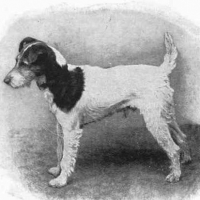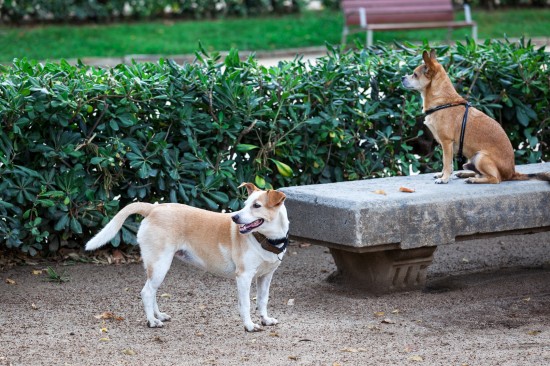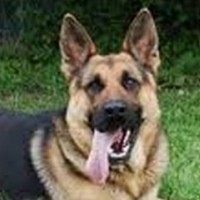For a successful owner of a dog it is very important to understand that the dog training methods used in training a dog can vary due to numerous factors. It is important to adapt and achieve a positive outcome.
Commands
Total control is the groundwork on which all succeeding training is based. The successful teaching of obedience is brought about by a series of repetitive forming exercises taught on command and put into practice under guidance, with the later being discontinued at the earliest possible moment. It is not to be expected that in teaching a dog a new exercise. He will be immediately aware of what is to be done or how to associate a command with the required action. Before he does so, the same command, tone of voice and guided action will have to be carried out on repetitive occasions. Care should be taken to avoid boredom to both dog and owner.
The various exercises which constitute general obedience are introduced in a certain progressive sequence which ultimately pieces together. The dog must thoroughly grasp each exercise before progressing to another. It must be borne in mind that dogs, just as human beings, are diverse in character. Some are quicker in response to training, others are more sensitive and all have there off moments.
As training progresses, the dog will learn to associate certain happenings with localities, sounds or people, and react accordingly. Whilst this type of association must be avoided at all costs in criminal work training, it is conversely, the basis upon which rests the eventual standard of the obedience training. In this training, the dog is expected to react in a set manner each time he hears or sees a specific command. To obtain this behaviour in a dog, the commands, temperament and actions of the handler must remain the same. Variations will only puzzle the dog and make training more difficult.
Words of command should be clear, concise and therefore preferably confined to single syllables. It is the sound and tone of the voice, not the volume which controls the dog. Commands must not be repeated as a bad association will be created in the dogs mind which will lead to faulty training. The dog, from the first day of training must never be allowed to ignore a command or fail to complete a given one. The dog must never be allowed to suspect that there is a possibility of being able to avoid a command. To allow one to be ignored for any reason whatsoever can give a dog a false impression, which, if allowed to develop, will make many problems in the ensuing training. It is for this reason that training in all exercises must be commenced on the leash and, therefore, can be instantly guided into the action required. At the commencement of training the word of command may be accompanied by physical influence and, in the intermediate stages, if necessary, by visual aids, such as hand signals.
Infinite patience is needed in showing the dog what he is required to do. Faults must be corrected at the time they occur.
Disobedience must be met with firmness once it is ascertained that the dog has clearly understood the meaning of the command and has learnt the exercise correctly. The dog does not understand our standards of right or wrong and it is important from the training point of view, that we do not credit him with these powers when considering the right application of correction. The use of physical punishment should only be resorted to in cases of emergency, and under no circumstances should it be considered a training measure. Proper use of the choker chain, the verbal command or admonition and the withholding of praise are usually sufficient correctives. Care must be taken that the habit of flicking the dog with the hands or leash is not allowed to develop. As shown above dogs are diverse in character and it is important that correction fits the temperament of the dog as well as the misdeed.
Nagging must be avoided at all times as must also boring or over-tiring the dog by continuing the exercise too long.
Working happiness should prevail throughout the training by giving plenty of praise. This praise must be given even if the dog has had difficulty in doing the exercise, but has completed it in the end. The manner and extent of the praise must of course vary with each dog, but having been suitably praised, the dog will know that it has done the right thing and the subsequent repeated commands will be made much easier to enforce. A period of training should always finish on both a happy and successful note, even if this involves reverting to a well known and liked exercise.
Control in training does not only mean control over the dog. It is essential that the handler has control over himself. Any loss of temper, with the subsequent aftermath of faulty training will completely confuse the dog and make difficult the mutual understanding which is so essential between owner and dog.

 A Testimony To A Friend – The Death Of A Pet
Whiskey, the teddy bear of my birth, the loss of a pet s
A Testimony To A Friend – The Death Of A Pet
Whiskey, the teddy bear of my birth, the loss of a pet s
 Puppy Toilet Training
Puppy Toilet Trai
Puppy Toilet Training
Puppy Toilet Trai
 Is The Catalan Sheepdog A Good Choice Of Pet?
Is The Catalan Sh
Is The Catalan Sheepdog A Good Choice Of Pet?
Is The Catalan Sh
 Acute Caudal Myopathy In Dogs - Limber Tail Or Swimmer’s Tail
Acute Caudal Myop
Acute Caudal Myopathy In Dogs - Limber Tail Or Swimmer’s Tail
Acute Caudal Myop
 Treat Your Dogs Allergies Naturally Part 2
Weve learned already that corn, an ingredient used in mo
Treat Your Dogs Allergies Naturally Part 2
Weve learned already that corn, an ingredient used in mo